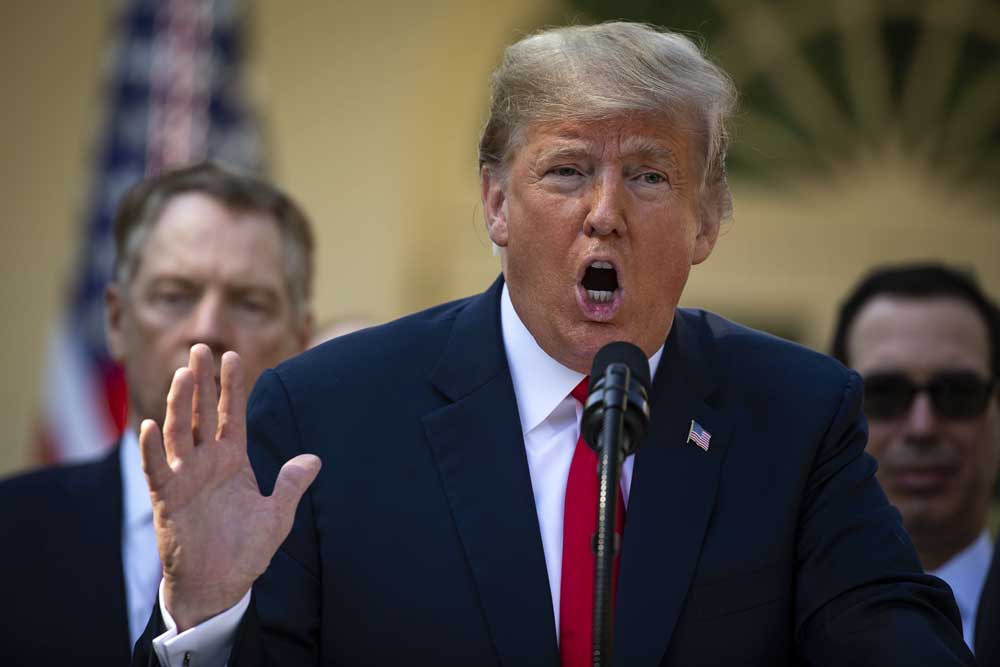Trump hails NAFTA deal as a promise kept
Published 12:00 am Tuesday, October 2, 2018

- President Donald Trump speaks about the revised North American Free Trade Agreement at the White House in Washington, Oct. 1, 2018. Trump hailed the agreement as a victory for the United States, Canada and Mexico, saying his get-tough approach to trade, including his use of tariffs, was bringing results. (Al Drago/The New York Times)
WASHINGTON — President Donald Trump hailed a revised North American Free Trade Agreement as a victory for the United States, Canada and Mexico on Monday, saying his get-tough approach to trade, including his use of tariffs, was bringing results.
“This landmark agreement will send cash and jobs pouring into the United States and into North America,” Trump said in remarks at the White House. “Good for Canada, good for Mexico.”
Trump portrayed the agreement as the fulfillment of a campaign promise to terminate NAFTA, saying he had made good on his plan to rip up “the worst trade deal ever made” and help American businesses and workers.
“For 25 years as a civilian, as a businessman, I used to say: How could anybody sign a deal like NAFTA?” Trump said, adding the deal reached Sunday was “not NAFTA redone, it’s a brand-new deal.”
The president attributed the breakthrough with Canada and Mexico to his use of tariffs and suggested that would continue to be part of his playbook as he tries to force concessions from other trading partners.
“Without tariffs, we wouldn’t be talking about a deal,” Trump said. “Just for those babies out there that keep talking about tariffs.”
The updated NAFTA, which will be called the United States-Mexico-Canada-Agreement or USMCA, represents Trump’s biggest trade achievement to date and comes after more than a year of intense negotiations with Canada and Mexico.
But while the United States resolved its North American trade differences, it is still embroiled in disputes with China and the European Union and it is unclear whether Trump’s pugilistic approach will work with those trading partners. Robert Lighthizer, Trump’s top trade negotiator, said that the agreement reached Sunday night would be a template for future deals, suggesting tariffs will remain part of Trump’s repertoire.
The agreement came together Sunday night after a weekend of frenzied negotiations between Canada and the United States, which culminated in keeping the three-country pact intact.
The agreement is largely a refresh of a 25-year-old pact that has brought together the economies of Canada, Mexico and the United States but had become somewhat outdated in the digital age. It makes a series of changes to areas like intellectual property and the digital economy, including protections for patents and domain names.
As part of the deal, Canada will ease protections on its dairy market and provide access that is greater than what the United States would have gained through the Trans-Pacific Partnership, a trade treaty that Trump withdrew from last year.
The United States relented on its demands to eliminate an independent tariff dispute settlement system that Canada has said is a red line in negotiations.
Keeping that was a major concession for the United States and a change for what was agreed with Mexico.
The countries reached an understanding that would protect Canada from the automobile tariffs that Trump has routinely threatened.
The agreement builds upon the deal that was reached with Mexico in August. Most importantly it made alterations to rules governing automobile manufacturing, in an effort to bring more car production back to the United States from Mexico. As part of the agreement, a significant portion of vehicles would have to be made by workers earning at least $16 an hour. The wage floor is intended to boost jobs in the United States and Canada, where wages are higher than Mexico.






